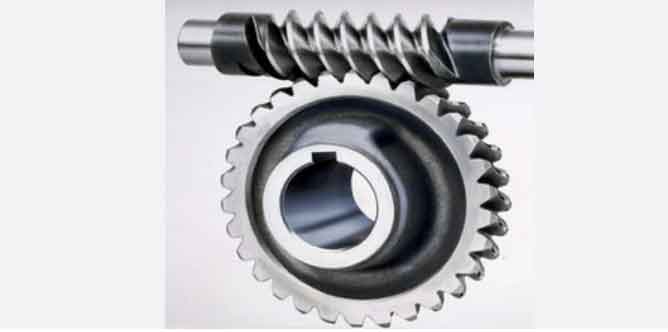
Efficient lubrication is crucial for worm gears to minimize friction, wear, and heat generation, thereby improving overall gear performance and longevity. Proper lubrication techniques for worm gears include:
- Oil Bath Lubrication: In oil bath lubrication, the worm gear is partially or fully submerged in a lubricating oil reservoir. The rotating motion of the worm gear picks up the oil, ensuring continuous lubrication. This method is simple and effective for many applications.
- Oil Splash Lubrication: Oil splash lubrication involves using a rotating oil slinger attached to the worm shaft. As the worm rotates, it flings oil onto the gear teeth, providing lubrication. This method is commonly used in small to medium-sized worm gear applications.
- Grease Lubrication: Grease lubrication is used when it’s challenging to maintain a continuous oil bath. Grease is applied to the mating surfaces, and it provides a more viscous lubricating film, reducing friction and wear. Grease lubrication is suitable for applications with lower sliding speeds and moderate loads.
- Oil Mist Lubrication: Oil mist lubrication involves using a fine mist of lubricating oil that is delivered to the meshing surfaces. The oil mist is generated by an oil mist generator and directed to the gear contact area. This method is often used in high-speed and high-temperature applications.
- Forced Lubrication: Forced lubrication uses pumps to deliver a controlled amount of oil to the gear meshing surfaces. This method ensures a consistent and adequate supply of lubrication, making it suitable for heavy-duty applications with high loads and speeds.
- Oil Groove and Oil Hole Lubrication: In some worm gear designs, oil grooves and oil holes are incorporated into the worm gear and/or worm shaft to facilitate oil distribution and ensure proper lubrication at the gear mesh.
It’s essential to select the right lubricant for worm gears based on factors such as operating speed, temperature, load, and environmental conditions. The lubricant should have appropriate viscosity, load-carrying capacity, and wear resistance to provide effective lubrication over the gear’s operational life.
Additionally, proper maintenance practices, including regular inspection and monitoring of lubrication levels and conditions, are essential to ensure that the worm gear remains properly lubricated and functions optimally. If necessary, lubricant analysis can be conducted to assess the condition of the lubricant and determine if it needs replacement.
By employing the right lubrication technique and maintaining a consistent and appropriate lubrication regimen, worm gears can operate efficiently, achieve low wear rates, and extend their service life.
